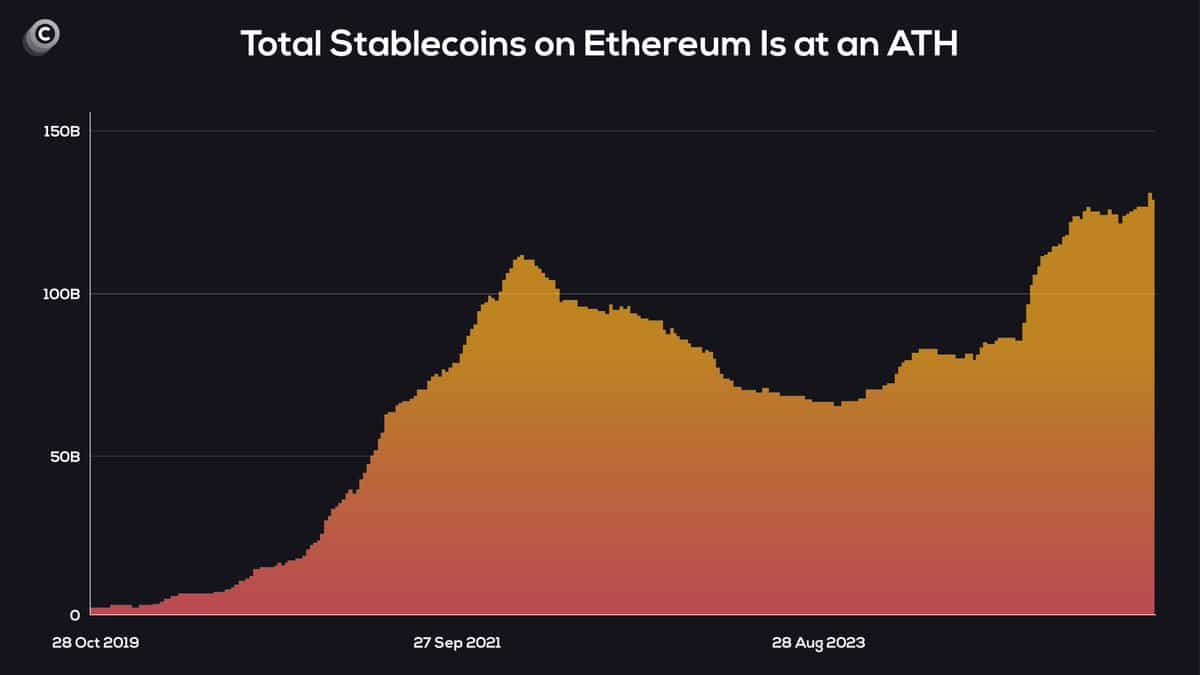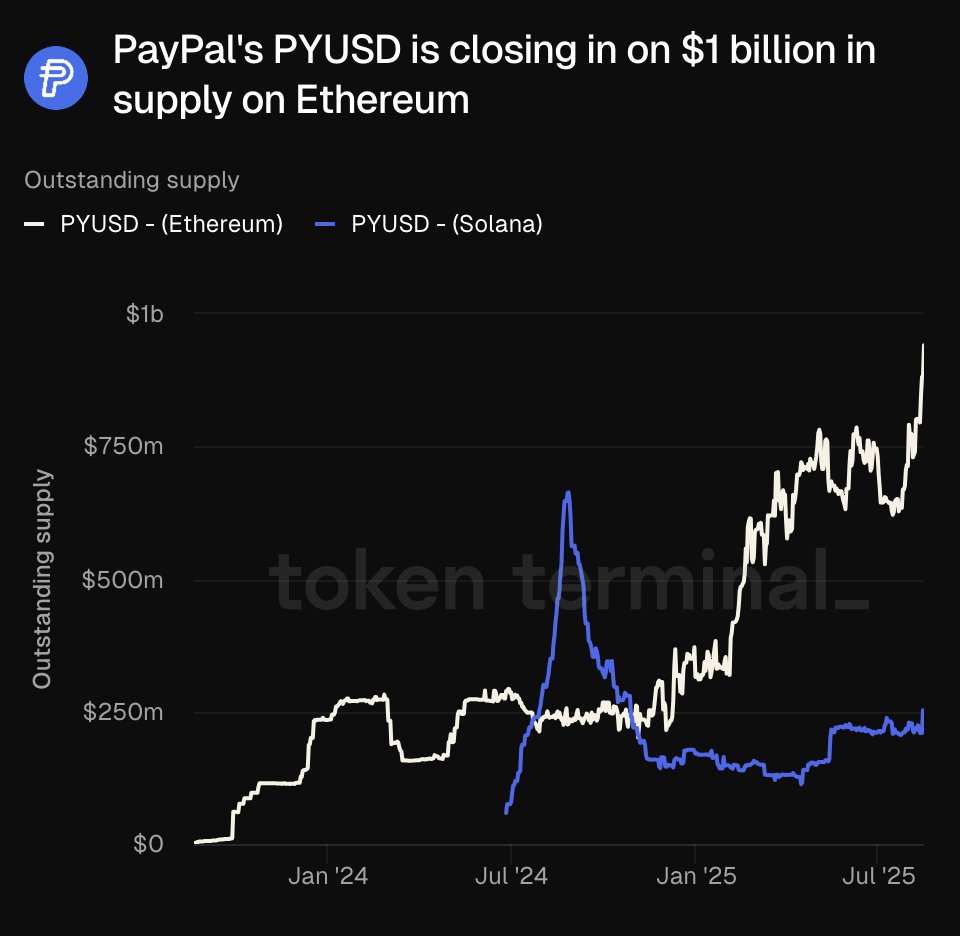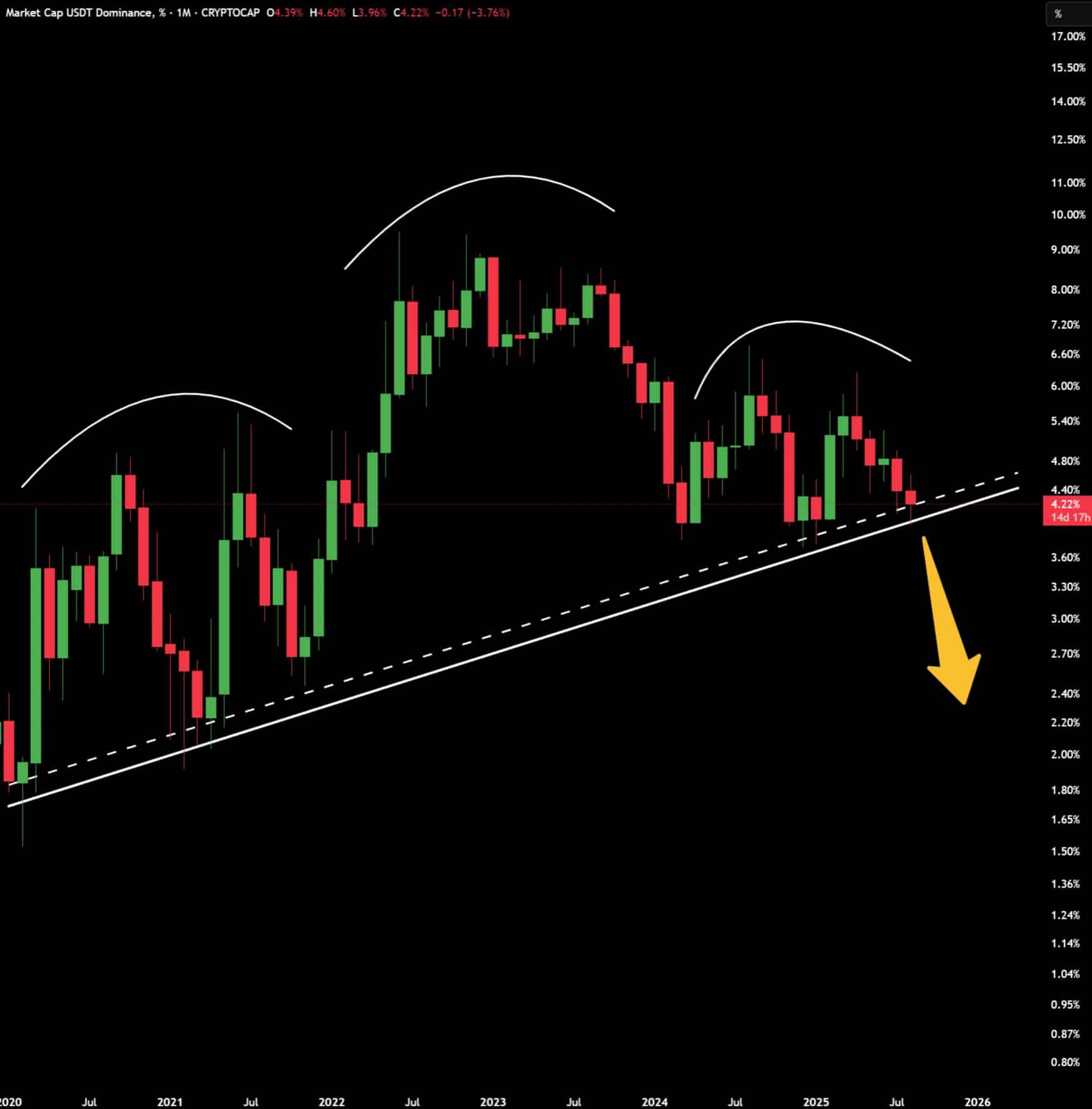Stablecoins are crucial for the crypto market, as their increased supply, particularly on Ethereum, signals potential liquidity for an upcoming altcoin season.
-
Stablecoins supply is now over $130 billion on Ethereum, indicating a bullish outlook.
-
The increase in stablecoins might trigger an altcoin rally, providing necessary liquidity.
-
By 2030, stablecoins could represent about $3 trillion, making up 10% of M2.
Explore the dynamics of stablecoins and their potential impact on the crypto market as regulations streamline. Stay informed!
What is the current state of stablecoins in crypto?
The stablecoin market currently sees a surge, with a total supply reaching approximately $130 billion on Ethereum. Recent regulatory bills in the U.S. aim to boost transparency, prompting significant inflows into non-stable cryptocurrencies.
How does stablecoin liquidity influence the market?
The recent uptick in stablecoin liquidity is primarily driven by a diversified supply across various blockchains. By 2030, this supply might account for about 10% of M2, translating to an estimated $3 trillion. Such growth signals strong market interest and influences liquidity for trading activities.
Frequently Asked Questions
What drives stablecoin supply trends?
The stablecoin supply on networks like Ethereum has been affected by regulatory changes and increasing institutional interest, indicating a bullish market sentiment.
Why are stablecoins vital for altcoins?
Stablecoins serve as a bridge, providing necessary liquidity for altcoins. When stablecoin flows increase, they can lead to a greater investment in altcoins, enhancing market dynamics.
Key Takeaways
- Stablecoins supply has surged: A significant increase indicates potential new liquidity in the market.
- The U.S. Congress’ regulation: New laws aim for increased transparency, which boosts market trust.
- Monitoring altcoin season: Understanding stablecoin dynamics is crucial for investors looking for opportunities in the altcoin market.
Conclusion
The stablecoin market is experiencing unprecedented growth, paving the way for potential altcoin rallies. By integrating both stablecoin and altcoin market trends, investors can stay ahead in the evolving crypto landscape.
Stablecoins volume hits an ATH
The total stablecoins on the Ethereum network hit an ATH of about $130 billion. This trend has been rising since the low established in August 2023.
This was in support of ETH’s dominance in stablecoin issuance. Moreso, it was an indication of how public listed companies were building on the ETH network.
When stablecoins inflows surge, it indicates profit-taking activities or preparation to inject liquidity into non-stable crypto assets.

In this case, the surge was influenced by both.
What’s behind this liquidity?
The surge in stablecoin liquidity was driven by the spike in supply across multiple blockchains. This supply is projected to constitute about 10% of M2 by 2030, which is about $3 Trillion. A very bullish case for all cryptos.
The supply of PayPal’s PYUSD was approaching the $1 billion mark on Ethereum. On Solana [SOL], it stood at $250 million, as per Token Terminal data.

Still, the supply of the highest-capped stablecoin, USDT, was back to growth mode. This was majorly due to the capital rotation from Bitcoin [BTC].
Most of these USDT were flowing from exchanges through the TRON [TRX] network.
Also, USDC monthly transfer volume on the Aptos [APT] blockchain was at record highs of $8.60 billion. The transfer count followed with a peak value of 23.2 million.
With the U.S. aiming to be a hub for crypto, the country held a huge chunk of stablecoins worth $347 million.
The U.S. is building a crypto reserve, mainly Bitcoin and Ethereum. This vast amount of stablecoin liquidity could be used to actualize their crypto reserve.
Is liquidity the missing piece for an altcoin season?
The question now is, could stablecoin flows unlock the next altcoin season? From these activities, the altcoin rally might be waiting for the stablecoins’ power.
Analytically, stablecoin dominance (roughly at 4.22%) has formed an exhaustion pattern. A break below the neckline of the heads and shoulders could ignite a full altcoin season.

But why is this break important? This is because altcoins are inversely correlated to the paired stablecoins.
More importantly, BTC dominance has to continue dropping to facilitate a full rotation. The value has dropped from 62.50% to 59.56% in only two weeks per Niels on X (formerly Twitter).
